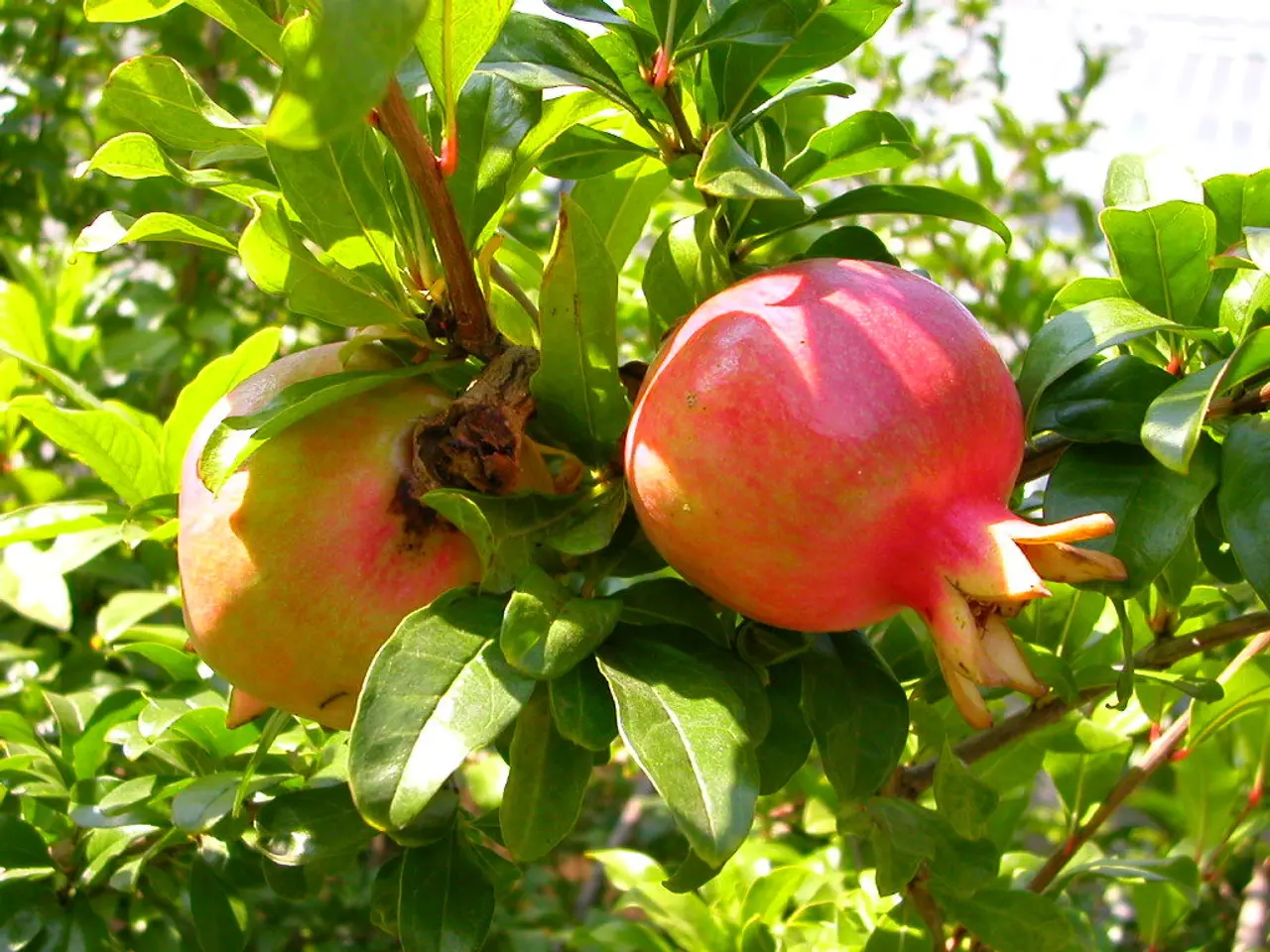Techniques for Duplicating Pomegranate Arbor
Pomegranates, with their juicy and nutritious seeds, are a popular fruit worldwide. If you're a pomegranate enthusiast, you might be interested in growing your own tree. Here's a guide on how to propagate pomegranate trees using various methods, including seeds, cuttings, and air layering.
Propagating Pomegranate Trees from Seeds
- Collect seeds from a ripe pomegranate, rinse them, and let them dry for a day or two.
- Plant the seeds in a pot filled with soil, covering them lightly while keeping the soil moist.
- Place the pot in a warm, sunny spot and wait for germination, which can take several weeks.
Propagating Pomegranate Trees through Cuttings
- Select a healthy branch that is 6-8 inches long with several leaves.
- Cut the branch at a 45-degree angle and remove the leaves from the bottom half to prevent rotting.
- Dip the cut end in rooting hormone to encourage faster root growth.
- Plant the cutting in a pot filled with a well-draining mix like potting soil mixed with sand.
- Wrap the cut area with damp sphagnum moss to help retain moisture.
- Keep the cutting in a warm, sunny spot and wait for roots to appear.
Air Layering: A Unique Propagation Method
Air layering is a more advanced method that allows the tree to grow roots while still connected to the parent plant. Here's how to do it:
- Select a healthy, semi-hardwood branch on the parent pomegranate tree that is about pencil thickness and flexible.
- Make a ring or girdling cut around the branch about 12-18 inches from the branch tip. Remove a ring of bark 1-2 inches wide to expose the green cambium layer, which promotes root formation.
- Apply rooting hormone (optional but recommended) to the exposed area to stimulate root growth.
- Wrap the wounded section with a moist rooting medium such as sphagnum moss mixed with perlite to retain moisture.
- Cover the moss with plastic wrap or a plastic bag, securing both ends with ties or tape to keep the moss moist and create a humid environment.
- Check regularly to ensure the moss stays moist. Roots will typically develop within 4 to 8 weeks.
- Once roots are visible through the moss, cut the rooted branch below the new root ball and pot or plant it in soil.
This method is particularly useful for pomegranates that do not root easily through cuttings. It yields strong, genetically identical new pomegranate plants efficiently.
Additional Tips
- Perform air layering during the growing season when the tree is actively growing, typically spring or early summer.
- Use healthy, disease-free parent trees to improve success.
- Maintain consistent moisture without waterlogging the rooting medium.
- After planting the newly rooted tree, keep it well-watered until established.
Caring for Your Pomegranate Tree
- Pomegranates like slightly acidic to neutral pH, around 6.0 to 7.0.
- The right soil is key for pomegranate propagation. Use a well-draining soil mix, and consider adding compost for a nutrient boost.
- The right location for pomegranate trees is a spot that gets plenty of sunlight.
- Pruning should be done in late winter or early spring, removing any dead or weak branches.
With these tips, you should be well on your way to growing your own pomegranate tree. Happy propagating!
[1] Pomegranate Propagation Techniques
[2] Air Layering Pomegranate Trees
[3] Propagating Pomegranate Trees
[4] Pomegranate Propagation
[5] Pomegranate Propagation: Tips for Success
Read also:
- Budget cuts at federal and state levels jeopardize advancements in fighting HIV and AIDS within Dallas County
- Strategies for Maintaining and Boosting Physical Activity as You Grow Older
- Understanding Prediabetes: A Precursory Condition to Diabetes
- Strategies for Strengthening a Nigerian Infant's Immune System




